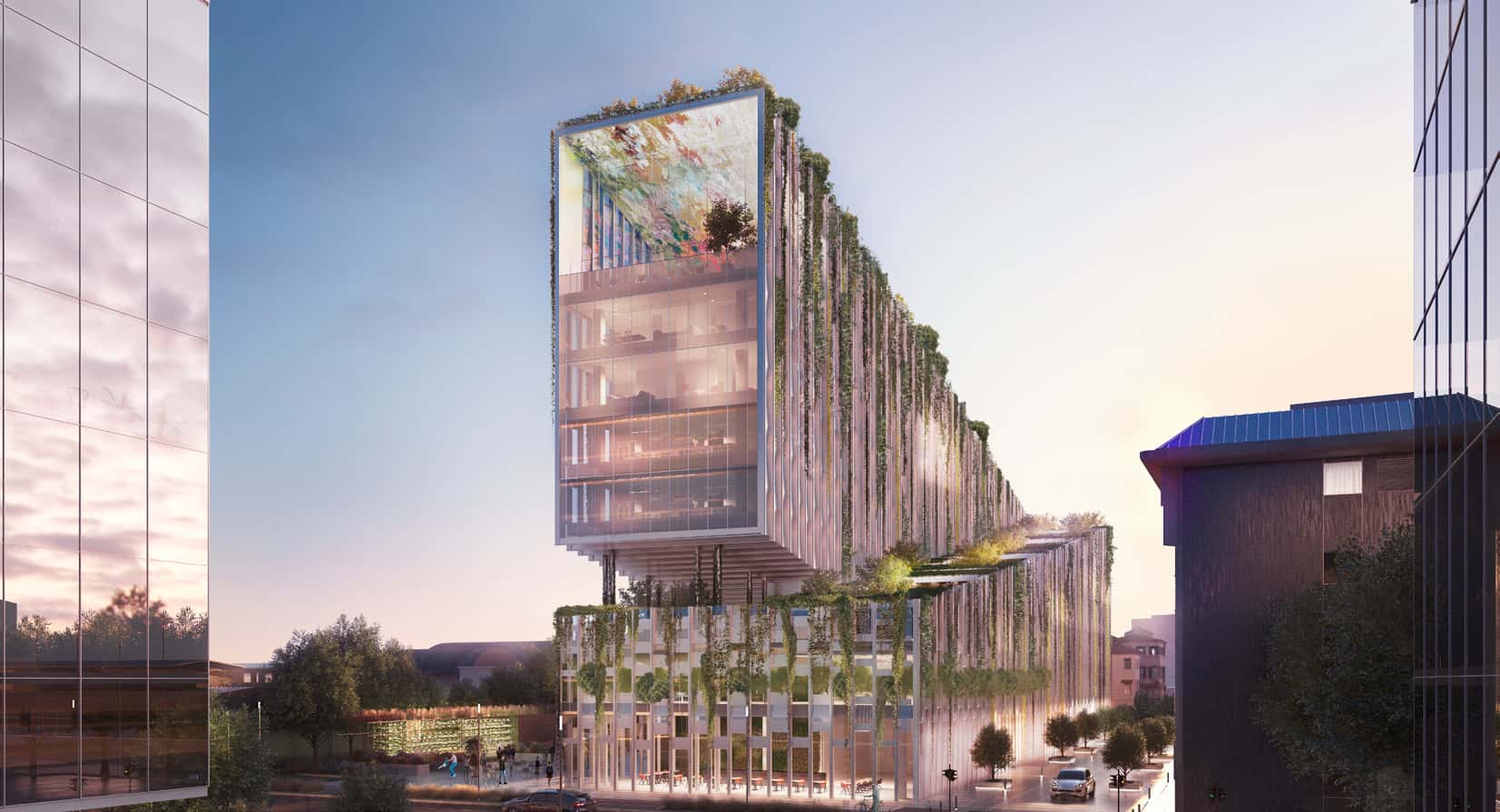How Data Can Drive Interdisciplinary Connections to Foster Ecological Solutions
Downloads
DOI:
https://doi.org/10.47982/spool.2022.1.01Keywords:
Ecological Solutions, Data-driven Design, Ecological Perspective, Urban Environmental Degradation, Artificial-naturalAbstract
We are facing an urgent global environmental crisis that requires a reframing of traditional professional and conceptual boundaries within the urban environment. Complex and multidisciplinary issues need complex and multidisciplinary solutions, which result from the collaboration of many different disciplines concerned with the urban environment. A more integrated ecological perspective that recognizes the complexity of urban environments and resituates our ‘artificial’ or human-made world within its natural ecosystem can facilitate this shift towards greater knowledge exchange. C40 Cities case studies provide a framework within which to understand the disciplines and scales encompassed by ecological solutions, while projects at MIT Senseable City Lab and CRA-Carlo Ratti Associati highlight how data is used as a tool in driving ecological solutions. The artificial world of sensors, data and networks creates a bridge between the ‘artificial’ and ‘natural’ elements of our urban environments, allowing us to fully understand the present condition, connect city users and decision makers, and better integrate ecological solutions into the built environment.
How to Cite
Published
Issue
Section
Categories
References
Anjomshoaa, A., Duarte, F., Rennings, D., Matarazzo, T. J., deSouza, P., & Ratti, C. (2018). City Scanner: Building and Scheduling a Mobile Sensing Platform for Smart City Services. IEEE Internet of Things Journal, 5(6), 4567–4579. https://doi.org/10.1109/JIOT.2018.2839058
Attstrom, K., Bailey, T., Gander, S., Hahn, F., Huxley, R., Leonardsen, J., Stener Pedersen, H., Porteron, S., & Sarfatti, C. (2020). Urban Climate Action Impacts Framework (p. 42). C40 Cities Climate Leadership Group & Ramboll. https://www.c40.org/research
Augmented Reality for Collaborative Urban Planning. (2019, December 16). Experiencing VITAE – LABSIMURB. http://www.labsimurb.polimi.it/research/ar4cup/experiencing_vitae/
Australian Bureau of Statistics. (2021, April 1). Statistical Language—What are Data? c=AU; o=Commonwealth of Australia; ou=Australian Bureau of Statistics. https://www.abs.gov.au/websitedbs/D3310114.nsf/Home/Statistical+Language+-+what+are+data
Benyus, J. (2015). The Generous City: The Generous City. Architectural Design, 85(4), 120–121. https://doi.org/10.1002/ad.1939
Budds, D. (2020, September 18). Skyscrapers Dripping in Gardens Look Great—Until the Mosquitoes Swarm. Curbed. https://archive.curbed.com/2020/9/18/21445069/qiyi-city-forest-garden-mosquitoes-chengdu
C40 Cities. (2021a). Winning Projects | Reinventing Cities | Reinventing Cities. https://www.c40reinventingcities.org/en/professionals/winning-projects/
C40 Cities. (2021b, April 1). C40 | Reinventing Cities. https://www.c40reinventingcities.org/
C40 Good Practice Guides: Buenos Aires - Municipal Solid Waste Reduction Project. (2016, February). C40 Cities. https://www.c40.org/case-studies/c40-good-practice-guides-buenos-aires-municipal-solid-waste-reduction-project/
C40: Resilient Storm Water Management Leading to Climate Adaptation for Hong Kong, China. (2020, January 9). [Case Study: Hong Kong]. C40 Cities. https://www.c40.org/case_studies/resilient-water-systems-hong-kong
Coutts, A. M., White, E. C., Tapper, N. J., Beringer, J., & Livesley, S. J. (2016). Temperature and human thermal comfort effects of street trees across three contrasting street canyon environments. Theoretical and Applied Climatology, 124(1–2), 55–68. https://doi.org/10.1007/s00704-015-1409-y
Fondazione Politecnico. (2020, April 3). Reinventing Cities Vitae: The City of Milan and the C40 together for a more sustainable city of the future. Fondazione Politecnico. https://www.fondazionepolitecnico.it/en/initiatives/visionary-cities/reinventing-cities-vitae/
Heymans, A., Breadsell, J., Morrison, G., Byrne, J., & Eon, C. (2019). Ecological Urban Planning and Design: A Systematic Literature Review. Sustainability, 11(13), 3723. https://doi.org/10.3390/su11133723
Hirschlag, A. (2020, May 16). How urban planners’ preference for male trees has made your hay fever worse. The Guardian. http://www.theguardian.com/environment/2020/may/16/how-urban-planners-preference-for-male-trees-has-made-your-hay-fever-worse
Li, X., & Ratti, C. (2018). Mapping the spatial distribution of shade provision of street trees in Boston using Google Street View panoramas. Urban Forestry & Urban Greening, 31, 109–119. https://doi.org/10.1016/j.ufug.2018.02.013
Li, X., Zhang, C., Li, W., Ricard, R., Meng, Q., & Zhang, W. (2015). Assessing street-level urban greenery using Google Street View and a modified green view index. Urban Forestry & Urban Greening, 14(3), 675–685. https://doi.org/10.1016/j.ufug.2015.06.006
McHarg, I. L., & Steiner, F. R. (2006). The Essential Ian McHarg: Writings on Design and Nature. Island Press. https://books.google.it/books?id=KyK8BwAAQBAJ
MIT Senseable City Lab. (2016). Exploring the Green Canopy in cities around the world. Treepedia. Retrieved 9 May 2021, from http://senseable.mit.edu/treepedia
MIT Senseable City Lab (2018). City Scanner. Retrieved 15 September 2021, from https://senseable.mit.edu/cityscanner/
MIT Senseable City Lab (2021, April 1). Solar Cities. https://senseable.mit.edu/solar-cities/
Mora, S., Anjomshoaa, A., Benson, T., Duarte, F., & Ratti, C. (2019). Towards Large-scale Drive-by Sensing with Multi-purpose City Scanner Nodes. 2019 IEEE 5th World Forum on Internet of Things (WF-IoT), 743–748. https://doi.org/10.1109/WF-IoT.2019.8767186
Morton, T. (2018). Dark ecology: For a logic of future coexistence.
Nikolopoulou, M., & Steemers, K. (2003). Thermal comfort and psychological adaptation as a guide for designing urban spaces. Energy and Buildings, 7.
O’Connor, M. I., Pennell, M. W., Altermatt, F., Matthews, B., Melián, C. J., & Gonzalez, A. (2019). Principles of Ecology Revisited: Integrating Information and Ecological Theories for a More Unified Science. Frontiers in Ecology and Evolution, 7. https://doi.org/10.3389/fevo.2019.00219
Odum, E. P., & Barrett, G. W. (2005). Fundamentals of ecology. Thomson Brooks/Cole; /z-wcorg/.
OECD. (2020). Environment at a glance 2020. https://doi.org/10.1787/4ea7d35f-en
OECD. (2020). The Circular Economy in Cities and Regions. https://www.oecd-ilibrary.org/content/publication/10ac6ae4-en
Ratti, C., & Belleri, D. (2020). Towards a cyber ecology. Agathon: International Journal of Architecture, Art and Design, 08, 8–19. (C40 Group, n.d., p. 40)
Ritchie, H. (2018, September 27). How urban is the world? Our World in Data. https://ourworldindata.org/how-urban-is-the-world
Shanahan, D. F., Bush, R., Gaston, K. J., Lin, B. B., Dean, J., Barber, E., & Fuller, R. A. (2016). Health Benefits from Nature Experiences Depend on Dose. Scientific Reports, 6(1), 28551. https://doi.org/10.1038/srep28551
Sierra-Heredia, C., North, M., Brook, J., Daly, C., Ellis, A. K., Henderson, D., Henderson, S. B., Lavigne, É., & Takaro, T. K. (2018). Aeroallergens in Canada: Distribution, Public Health Impacts, and Opportunities for Prevention. International Journal of Environmental Research and Public Health, 15(8). https://doi.org/10.3390/ijerph15081577
Vitae. (2019). C40 Group. https://www.c40reinventingcities.org/data/sites_134e6/fiche/39/projects_memo_-_vitae_-_milan-_serio_f9b88.pdf
Wilson, E.O. (1984). Biophilia, Harvard University Press





